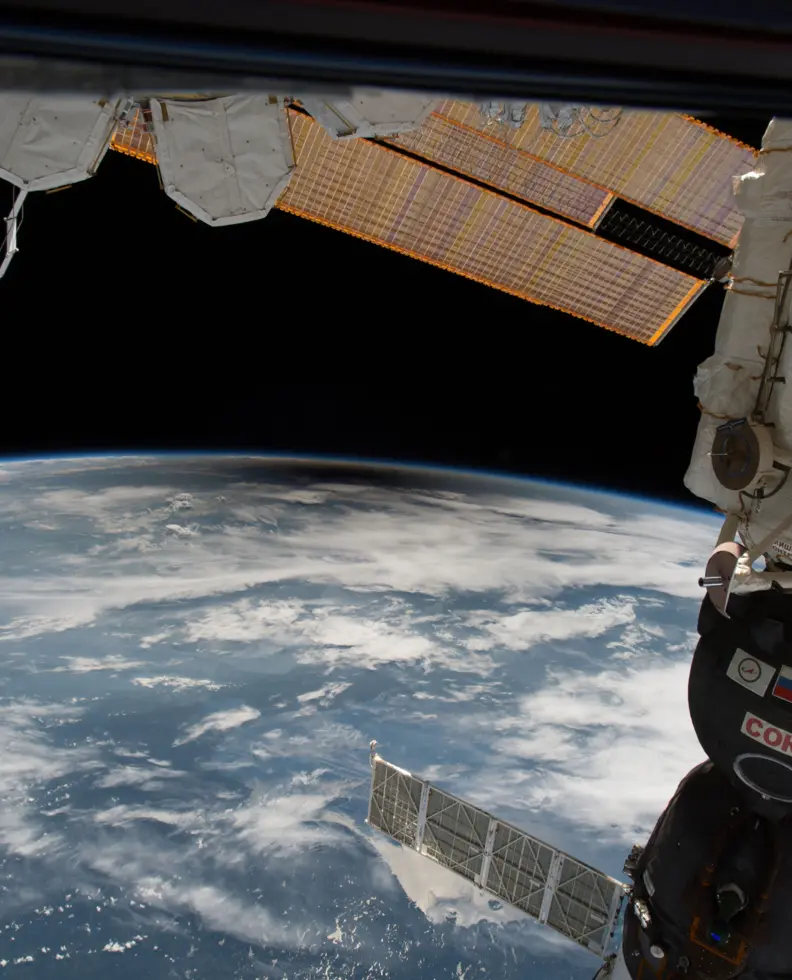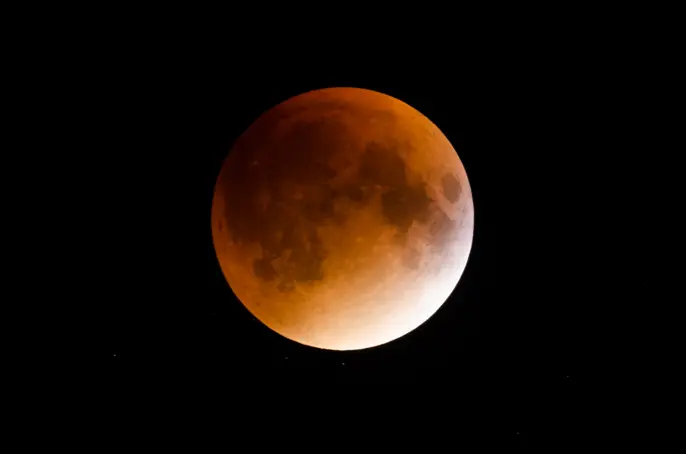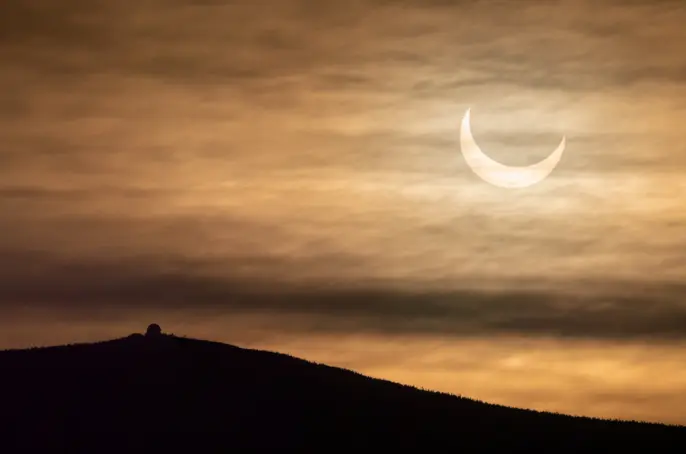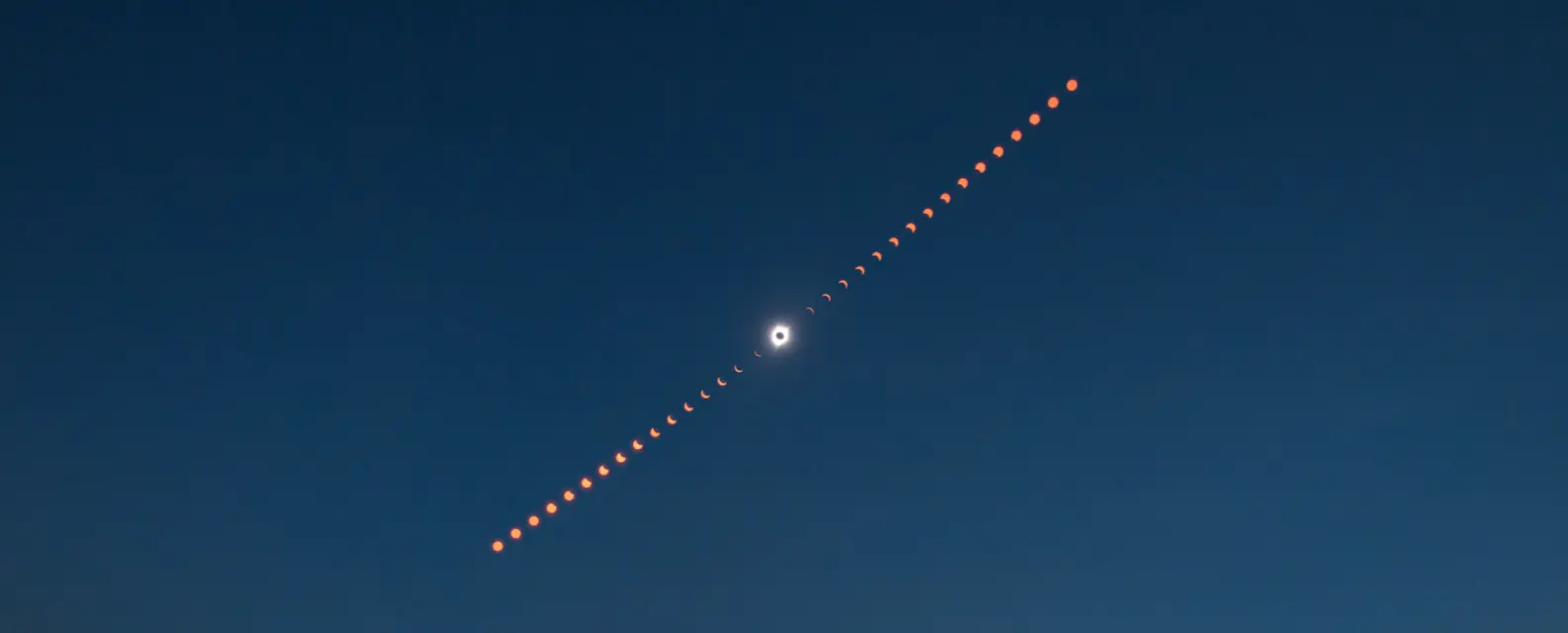

In the daylight
Solar eclipses happen in the daytime when the Moon moves between the Sun and the Earth, and the planet passes through its satellite’s shadow.
Although this means that solar eclipses always happen during a new moon, not all new moons produce an eclipse. Why? Because the Moon’s orbit around the Earth doesn’t perfectly match the Earth’s orbit around the Sun. A five-degree difference prevents these three celestial bodies from achieving perfect alignment every month. From our point of view, the Moon normally passes just above or just below the Sun.


TOTAL SOLAR ECLIPSES
During a total solar eclipse, the Sun is gradually covered by a dark circle as the moon passes in front of it. Never observe the partial phase of a solar eclipse without eye protection. Even when partially hidden, the Sun remains bright enough to permanently damage your eyes if you gaze at it for more than an instant.
Then, after a great deal of suspense, the Moon aligns perfectly with the Sun and the eclipse becomes total! Many consider this the most impressive astronomical event you can see. Indeed, astronomy enthusiasts are far from the only ones to find themselves overcome with emotion when they witness the spectacle! Theoretically, the total phase can last up to seven minutes and 30 seconds. However, anything more than four minutes is very rare. But as brief as a solar eclipse can be and despite the risk of it being obscured by clouds, some people travel to the other side of the world for what promises to be an experience like no other!
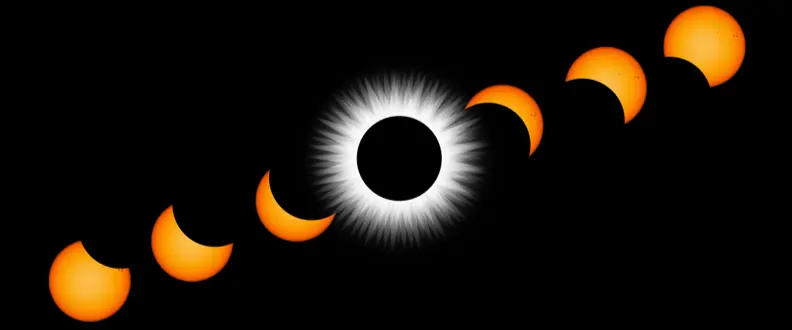

PARTIAL ECLIPSES
Sometimes, a solar eclipse never reaches the total phase. These are called partial eclipses.
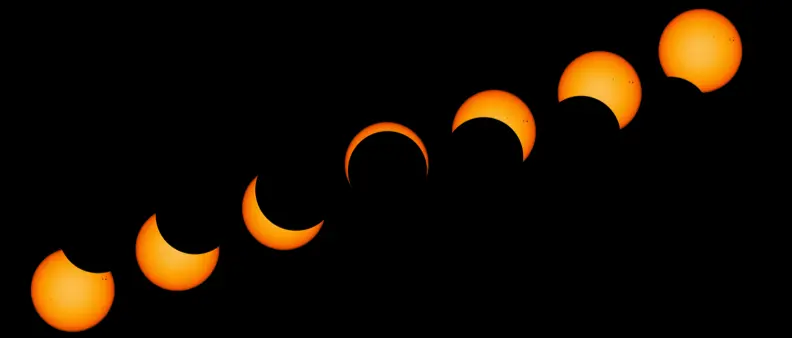

ANNULAR ECLIPSES
A very special thing happens during a solar eclipse if the Moon is at the farthest point in its orbit from the Earth. Because the Moon is smaller than the Earth, it doesn’t fully cover the Sun when seen from this distance. Instead, a thin “ring of fire” remains visible. These rare events are called annular solar eclipses.
They require a highly precise cosmic alignment: the Moon needs to be too far from the Earth to fully cover the Sun. Have you ever noticed how the Sun and the Moon appear to be almost exactly the same size? That’s because, by pure coincidence, not only does the Sun have a diameter 400 times greater than that of the Moon, but it is also 400 times farther away!
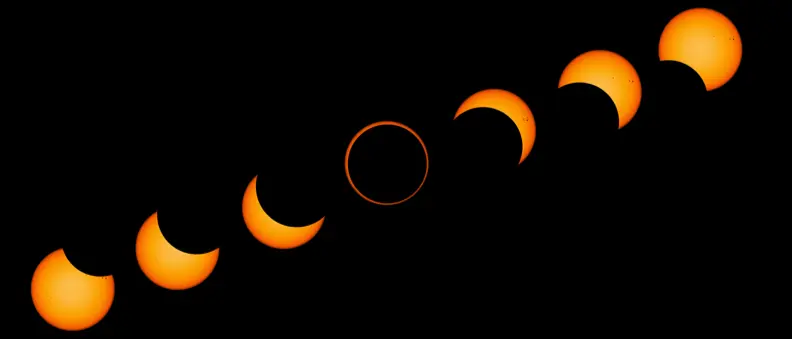

FREQUENCY
Because the Moon is moving away from the Earth at a rate of four centimetres per year, total eclipses are becoming rarer, and annular eclipses more frequent. One day, some 600 million years from now, the Earth will experience its last ever eclipse of the Sun!
Because the Moon casts a relatively small shadow on the Earth (between 100 km and 150 km wide), each solar eclipse only affects a tiny part of our planet’s surface. In fact, many total eclipses can only be seen from uninhabited regions. In other words, any given location will experience far fewer solar eclipses than lunar eclipses.
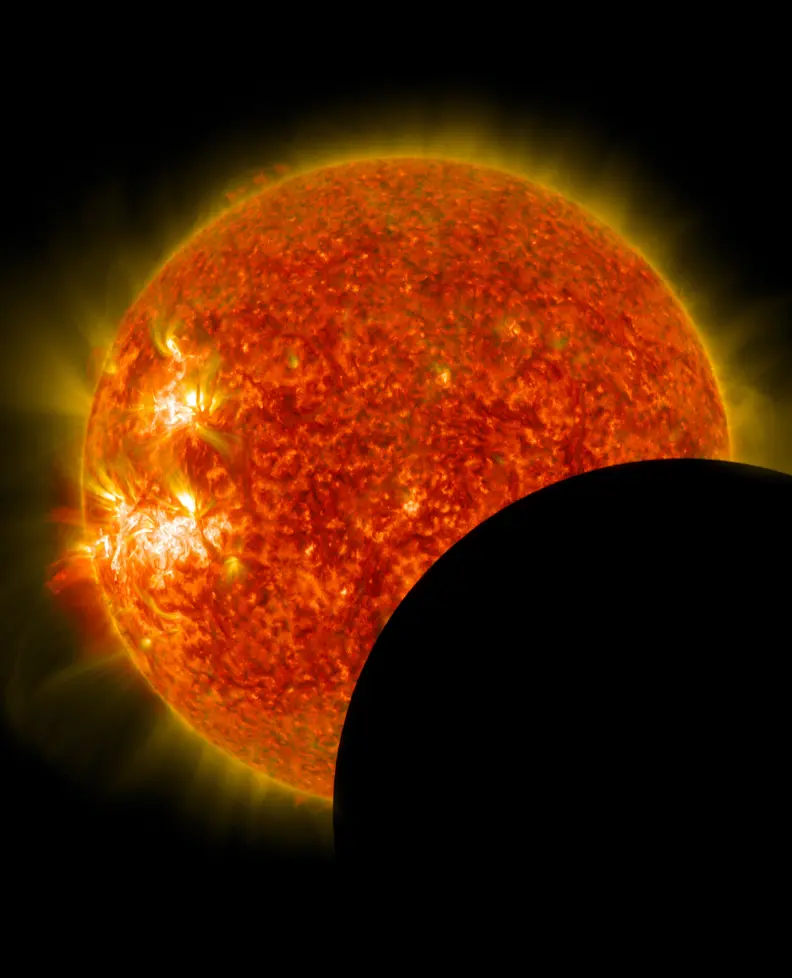

EFFECTS
OBSERVABLE EFFECTS OF PARTIAL AND ANNULAR ECLIPSES
For those of us living on the Earth, the most significant measurable effect of a partial or annular solar eclipse is decreased sunshine.
Of course, the impact on our environment is hardly dramatic, since cloudy or overcast skies often create very similar conditions. On the other hand, observing the phenomenon through eclipse glasses (or using another appropriate safety device) provides a feast for the eyes.
OBSERVABLE EFFECTS OF TOTAL ECLIPSES
By contrast, total solar eclipses generate a pair of highly dramatic effects on our environment! During the total phase, although ambient light decreases greatly, the darkness is not complete. The fact that the rest of the atmosphere is still being lit by the Sun gives the impression of twilight. This can cause some animal species to behave as if the day is coming to an end. For instance, they might wake up, begin feeding, return to or leave their nests, start making sounds or singing, etc. Birds are especially susceptible to such behavioural changes. Meanwhile, the temperature may noticeably drop, sometimes with a change in wind patterns.
Up in the sky, an even more amazing show is underway. As the blinding Sun disappears behind the Moon, normally hidden phenomena suddenly become visible. The most remarkable of these is the solar corona, the evanescent and diffuse atmosphere of the Sun, where superheated gases drift off into space. Although such gases tend to be very bright, they’re normally hidden by the light emanating from the blazing surface of the Sun. This halo of pale light is a strikingly beautiful feature of a total eclipse.
In addition, any solar flares that erupt during the total phase will be visible. Observers are often struck by the darkness of the lunar disk, which provides a sharp contrast to the solar corona and the rest of the sky. Finally, be prepared for the shocking sight of planets or bright stars appearing during daylight hours. With so many extraordinary things happening in such a brief time, it can be hard to take it all in!
